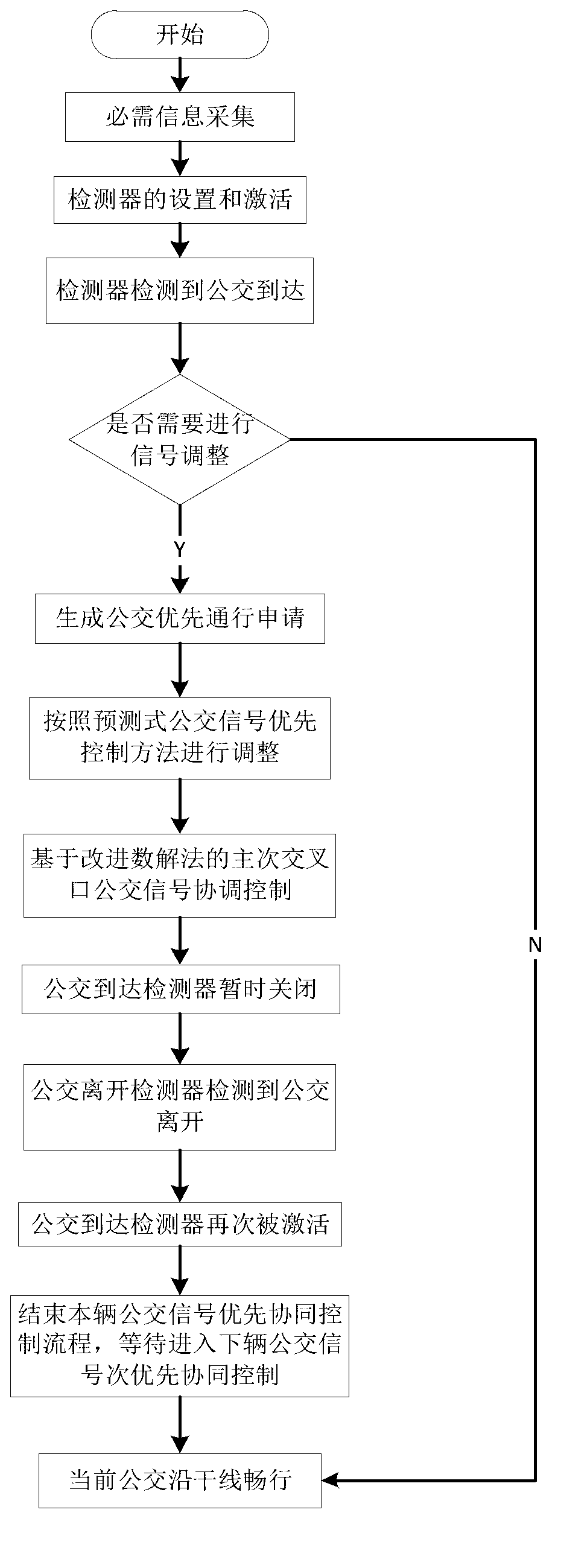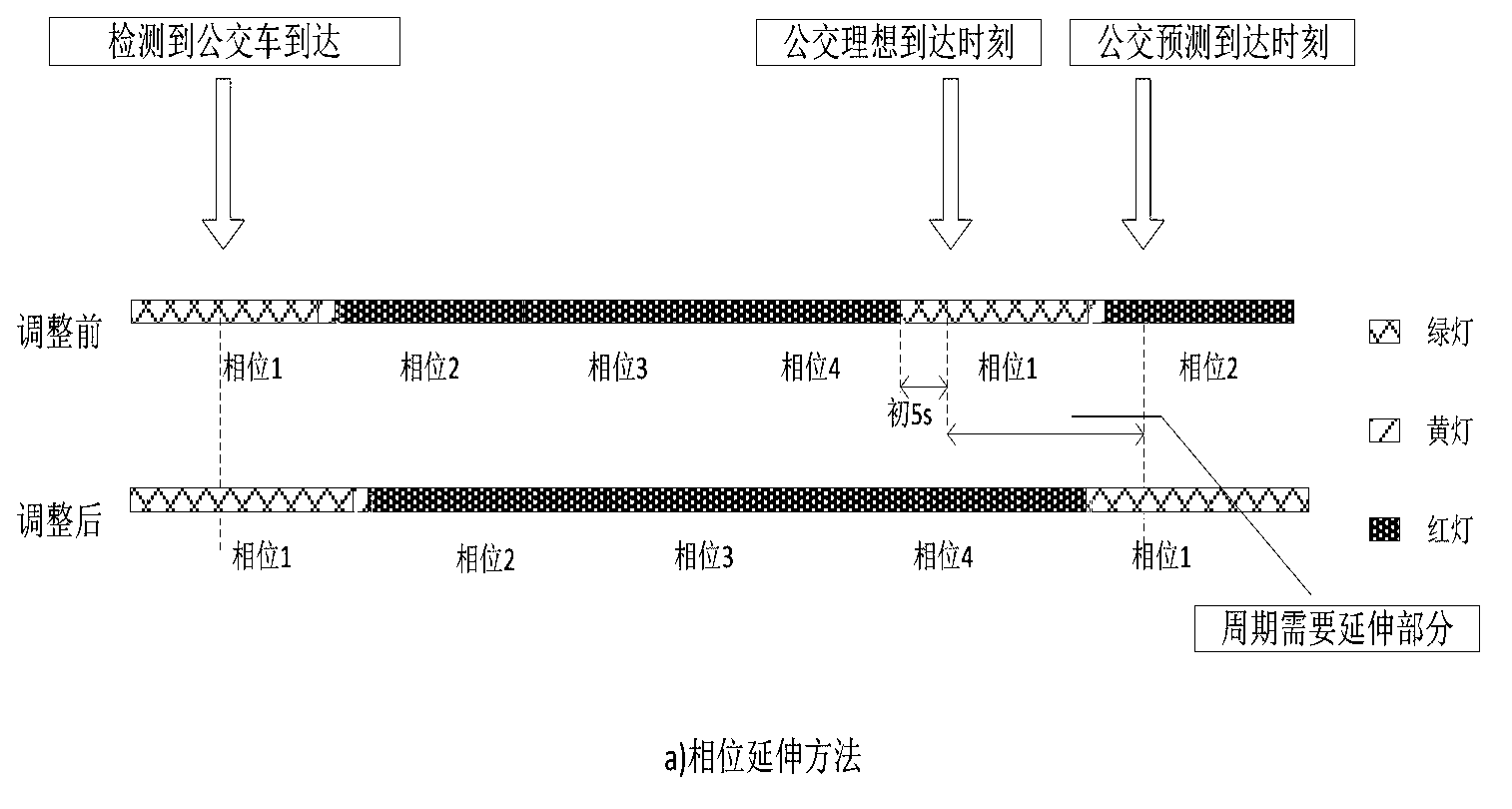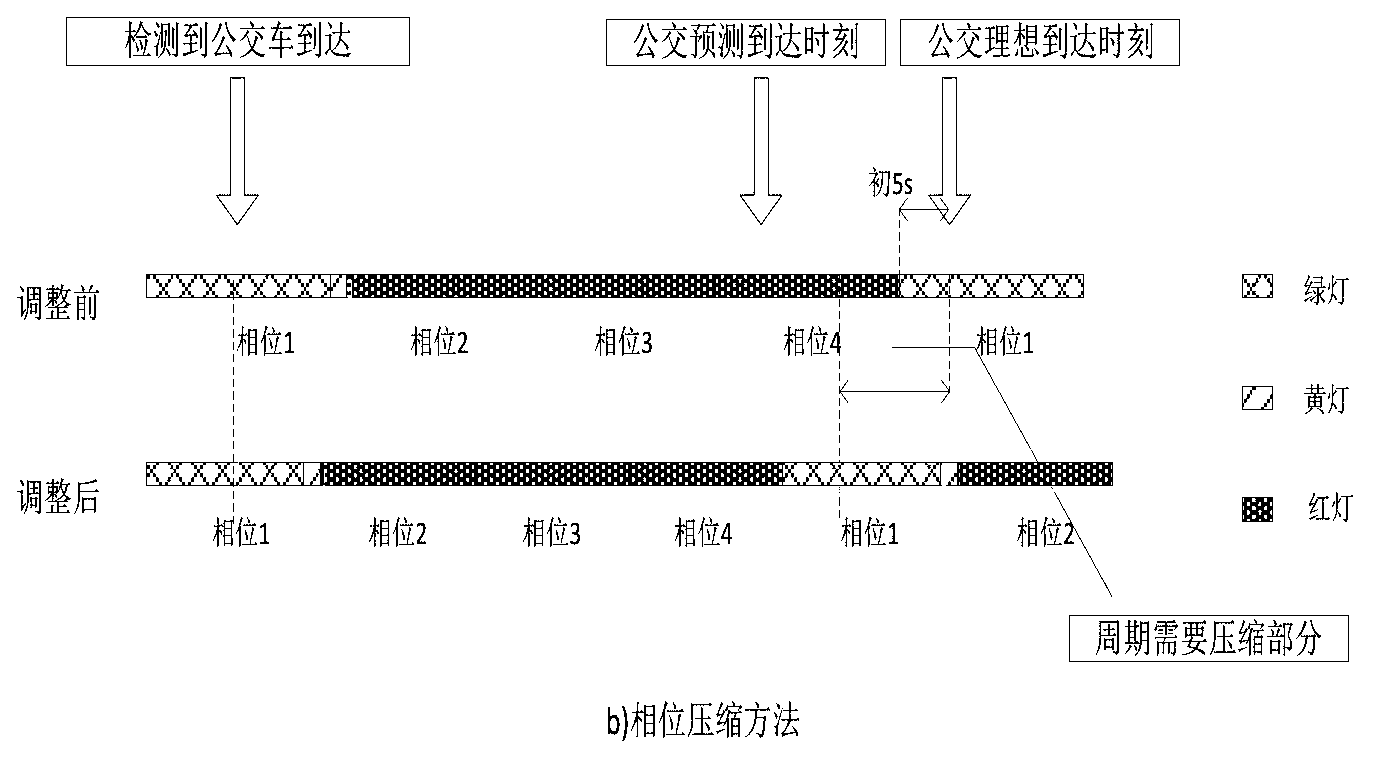Quick bus signal priority cooperative control method of primary and secondary crossings
A technology of coordinated control and signal priority, applied in traffic control systems, traffic control systems of road vehicles, instruments, etc., can solve the problem of not improving the overall traffic efficiency of arterial lines, not considering the coordinated control of primary and secondary intersections, and affecting downstream bus operation services. Quality and other issues to achieve the effect of improving the efficiency of trunk line operation
- Summary
- Abstract
- Description
- Claims
- Application Information
AI Technical Summary
Problems solved by technology
Method used
Image
Examples
Embodiment Construction
[0029] The present invention will be further described below in conjunction with the accompanying drawings.
[0030] as attached figure 1 Shown is a flow chart of a method for realizing the coordinated control of bus rapid transit (BRT) at primary and secondary intersections, which will be further described in conjunction with examples below.
[0031] 1) Collect the initial signal timing information, road information, traffic flow information, public transport facilities and operation information of each intersection signal light for primary and secondary intersections:
[0032] The initial signal timing information of primary and secondary intersection signal lights includes the primary and secondary intersection initial signal cycle duration C, phase number Z and the duration of each phase, and the green signal ratio of each phase λ i And display the green light time, the green light time interval I of each phase and the yellow light duration, the road information includes ...
PUM
 Login to View More
Login to View More Abstract
Description
Claims
Application Information
 Login to View More
Login to View More - R&D
- Intellectual Property
- Life Sciences
- Materials
- Tech Scout
- Unparalleled Data Quality
- Higher Quality Content
- 60% Fewer Hallucinations
Browse by: Latest US Patents, China's latest patents, Technical Efficacy Thesaurus, Application Domain, Technology Topic, Popular Technical Reports.
© 2025 PatSnap. All rights reserved.Legal|Privacy policy|Modern Slavery Act Transparency Statement|Sitemap|About US| Contact US: help@patsnap.com



